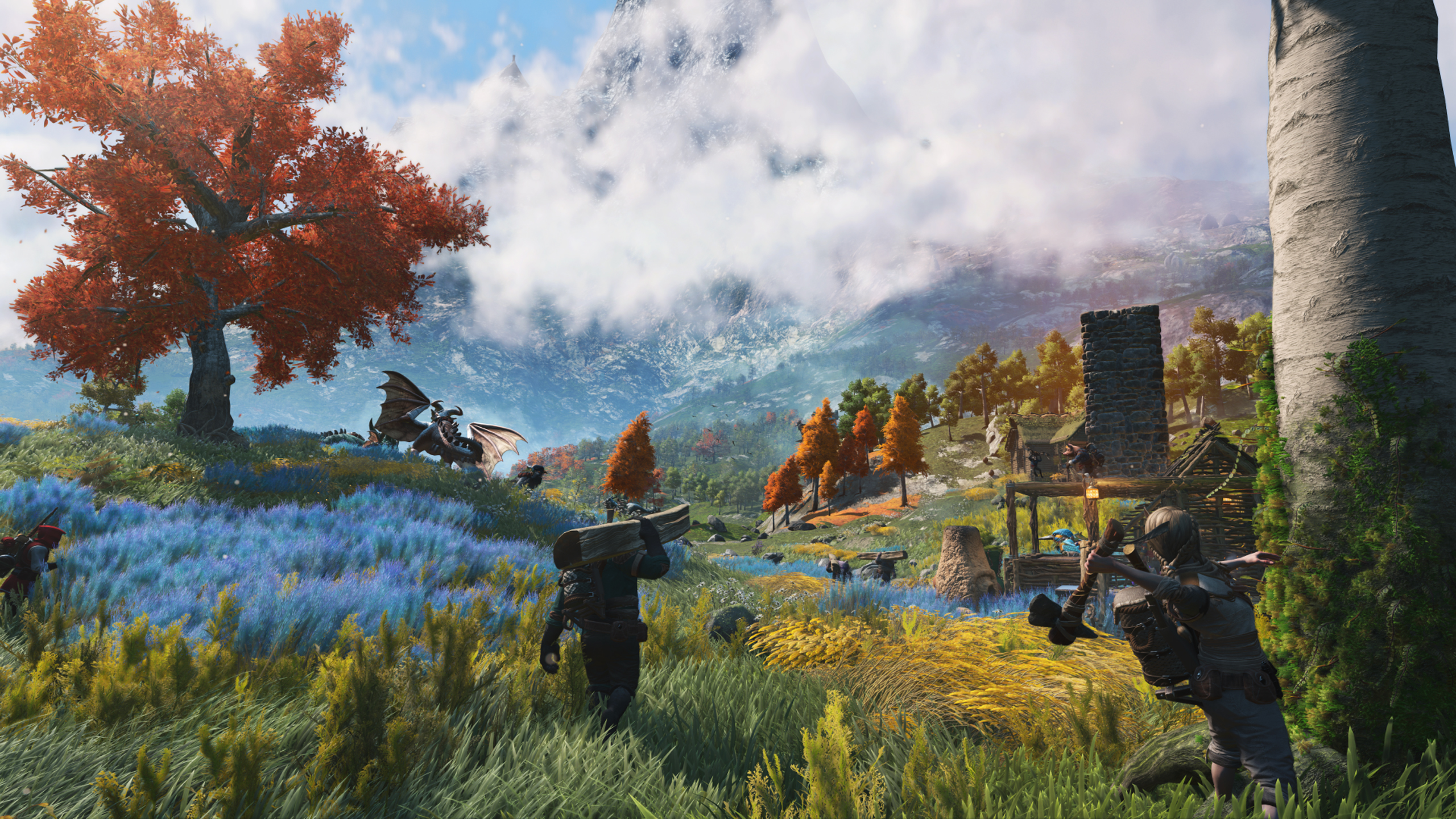How do you follow-up a game with an entire galaxy of procedurally-generated planets? With one procedurally-generated planet, it turns out—but it's a really big one.
Ten years on from the original announcement of No Man's Sky at the VGX awards, Hello Games has announced its new project, Light No Fire, at the TGA. It's clearly carrying on many of the concepts of post-updates NMS—procedural generation, exploration, base-building, and multiplayer—but switching genres from sci-fi to fantasy.
With that comes a shift in tone. Where No Man's Sky leaned into making you feel small and often alone in a vast galaxy, Light No Fire aims to be all about forming an adventuring party with your friends and setting out to explore a fantasy world dense with encounters.
At first glance, it seems less ambitious in scope than No Man's Sky—but Hello Games has emphasised to us that Light No Fire's single world is comparable in size to the real Earth. That's an easy fact to gloss over, so just take a minute to sit with it. It'll be an open world the size of the entire actual world. In videogame terms that is preposterously enormous, like if you could land anywhere in Microsoft Flight Simulator and discover an entire Assassin's Creed map at your location. Weirdly they're not the only ones attempting this right now, but that doesn't make it any less wild of a mission statement.
"For our new game, we wanted to create an earth," Sean Murray told Geoff Keighley on stage at The Game Awards. "A planet that is as varied as a universe. Something bigger than earth. Something with mountains, real mountains, not videogame mountains, but mountains that are miles high, taller than Everest, that when you climb to the top of them and look out, you can see rivers and canyons and continents. You can see oceans."
"So is this like an open world planet kind of thing?" Keighley asked.
"The first real open world," Murray said. "Something without boundaries. And we're going to let everyone play in it together. It's a place where people can live out their adventures together."
Where No Man's Sky's relatively small planets were often desolate and mostly empty, the goal here is for this one world to feel far more detailed, alive, and realistic. Verticality is particularly a focus, with accurately tall (i.e. gigantic) mountains from which you can look down across the rivers and valleys below and plan your next adventure.

And it's the same world for all of us—though the game will be instanced, only allowing you to see a certain number of other players at a time, it will also be persistent for everyone, and reflect everyone's actions within it. As in No Man's Sky, that means you'll be able to find bases other people have built and landmarks they've named, left permanently in the world (until someone knocks them down…).
Of course, we've been through this before. The original No Man's Sky pitch wasn't just ambitious, it was fatally over-ambitious, and ultimately there was a huge mismatch between the vision of the game people built up over countless previews and interviews, and what the game actually was at launch. Though the subsequent backlash was rife with a disproportionate toxicity and viciousness, it spiralled out of a genuine sentiment that the game had been misrepresented during its lengthy pre-launch period.
Though Hello Games has subsequently spent years updating and adding to No Man's Sky to bring it closer to the dream game many imagined, I think it's reasonable and sensible to be wary of the studio returning with another in many ways even grander pitch.

Watching the trailer with that perspective, I can't help but wonder about where this idea might clash with reality. The world is huge, but will that actually make it fun, or just a repetitive slog? Will discovering a new creature, artifact, or location feel meaningful, knowing it's just one of countless generated things scattered across a landscape too big for you to ever really get a handle on? Will this ultimately be a game that only clicks for existing No Man's Sky fans, despite the change of setting?
Elements certainly entice me. The promise of a Lord of the Rings-inspired sense of embarking on great journeys couldn't be more up my street; even better that it's combined with a fantasy world more whimsical and original than the usual western fantasy fare, featuring rideable giant kingfishers and rabbit-headed courtiers. The potential of the persistent world feels stronger here than it did in NMS.

Planets were too ephemeral and bases too utilitarian for leaving your mark on the galaxy to be exciting in that game, but the idea of ascending a mountain in a fantasy world and seeing a flag planted by another explorer, or a tower someone built to look out at the surrounding lands, is much more appealing. Squint, and for a moment it feels like you're looking at a sort of endless, ever-surprising Valheim across one enormous shared server.
Will all those big ideas come together in the final product? We can only hope. Let's just not let hope run away with us this time, as we keep an optimistic but cautious eye on Light No Fire.







